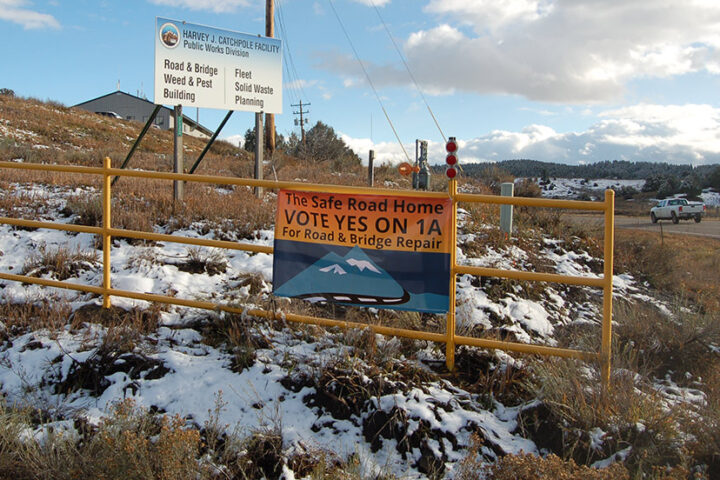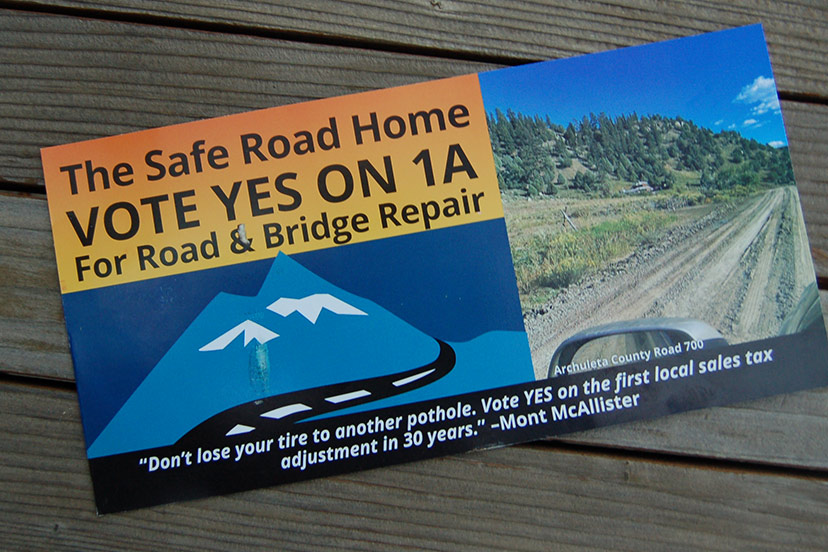Here are two questions about our local governments:
Given the condition of the Archuleta County economy… all the problems we’re concerned about… is a tax-funded ‘Recreation District’ something we should be putting up on a pedestal, as one of our highest priorities?
Given that we have only so much money to spend?
We’ll discuss the ‘Recreation District’ in a moment.
The second question, meanwhile, makes an assumption. That we have “only so much money to spend”. Which is not to imply that the amount remains the same, year after year.
When the Archuleta Board of County Commissioners proposed a dramatic increase in the amount of money they would collect through sales taxes — an increase of $6.5 million in the year 2023 — a number of local activists were motivated to look into the County’s finances, and discovered that the amount of sales tax collected and spent by the County had seen a huge increase between 2018 and 2022.
In 2018, the sales taxes totaled about $10.2 million, split 50/50 with the Town government — with the Town and County each receiving about $5.1 million. But following the US Supreme Court South Dakota v. Wayfair decision, Pagosa residents began paying Archuleta County sales tax to online retailers as well to local merchants, and most of that sales tax revenue accrued to the Town and County. (Tourists visiting Pagosa do not pay this additional online tax, because their sales tax is remitted to the city or town where they live.)
The total sales tax that the Town and County expect to receive in 2022? About $17.6 million. Following the Wayfair decision, the Town and County saw their sales tax revenues increase by about 75%. While our governments were seeing a 75% increase in revenues, the population of the county grew by only 7%.
One could easily think — with an increase from $10.2 million to $17.6 million — we might have seen a rather fabulous improvement in government services since 2018.
Maybe a boosted effort to address the community’s most pressing needs?
As mentioned in this editorial series, the editor of our local print newspaper, Terri House, asked Facebook users “to share their ideas for the changes they want to see in Pagosa Springs during 2023.” A large number of respondents proposed better maintenance of our road system.
Easier said than done.
Starting back in the 1960s, the Archuleta County commissioners began approving every subdivision development application that crossed their desks, with a couple of important results. The county ended up with over 30 square miles of new automobile-centric, suburban-style neighborhoods, served by what later proved to be 300 miles of generally poorly-constructed roads. The historical downtown Pagosa neighborhoods were platted in the 1880s to be pedestrian friendly — the first mass-produced American automobiles would not appear until 1906 — but the suburban neighborhoods in the unincorporated county platted in the 1960s and 1970s assumed that every family would own at least one automobile. As the population of the county outside the town limits grew from about 1,400 in 1970 to about 12,000 last year, those poorly-built roads felt the impacts.
But even a well-financed political campaign, funded by the taxpayer-subsidized Pagosa Springs Community Development Corporation and promising ‘The Safe Road Home’, could convince voters to hand more money to the County government. The proposed 37.5% sales tax increase was defeated by a 3-to-1 margin.

How about other pressing needs?
Last summer, the Pagosa Springs Town Council agreed on their ‘Goals & Objectives’ for 2022-2023. They chose three particular goals as their highest priorities.
I’ve shared them previously, but I think they bear repeating.
1. Sanitation District
Stabilize the pumping system, continue maintenance and upgrade efforts and explore long-term community solutions with the goal of the Town getting out of the Sanitation business.
2. Workforce Housing
Address current and projected needs by supporting efforts to add more deed-restricted units to local inventory through the public and private sectors.
3. Explore Recreation District
Engage the support of the wider community beyond the town in providing and managing parks, trails, open spaces, and recreational amenities in a coordinated and thoughtful way.
A functioning wastewater system… goes without saying. An effort to address the local housing crisis might also go without saying.
But choosing the creation of a tax-supported ‘Recreation District’ as your Number Three priority might seem a bit… well, unbelievable. Considering that the County government asked voters, in 2014, if they would support a tax-funded ‘Recreation District’ and a sizable majority of the voters — 60% — voted ‘No’.
Yes, that was 8 years ago. But does anyone think the voters are in the mood to support a new taxing district, after watching them overwhelmingly turn down a tax for road maintenance?
That being said, we know that the town voters approved a sizable new fee to fund ‘workforce housing’. The fee of $150 per bedroom per month would be charged to Short-Term Rentals (STRs, vacation rentals) located within the town limits. So the fee would be paid by tourists, not by local residents. The political campaign in favor of the ‘Workforce Housing Fee’ stressed the fact that STRs pay a much lower property tax rate than any other commercial business in the community, and that this fee would help ‘level the playing field’.
Thankfully, the Town sanitation district is no longer in a crisis situation.
Thankfully, our recreation amenities and programs are not in a crisis situation.
Thankfully, the tourist industry is not in a crisis situation.
Thankfully, our water district is not in a crisis situation.
We have a couple of problems in Archuleta County that appear to be crisis situations. Roads, and housing.
Which brings me to the subject of ‘entitlement’…
